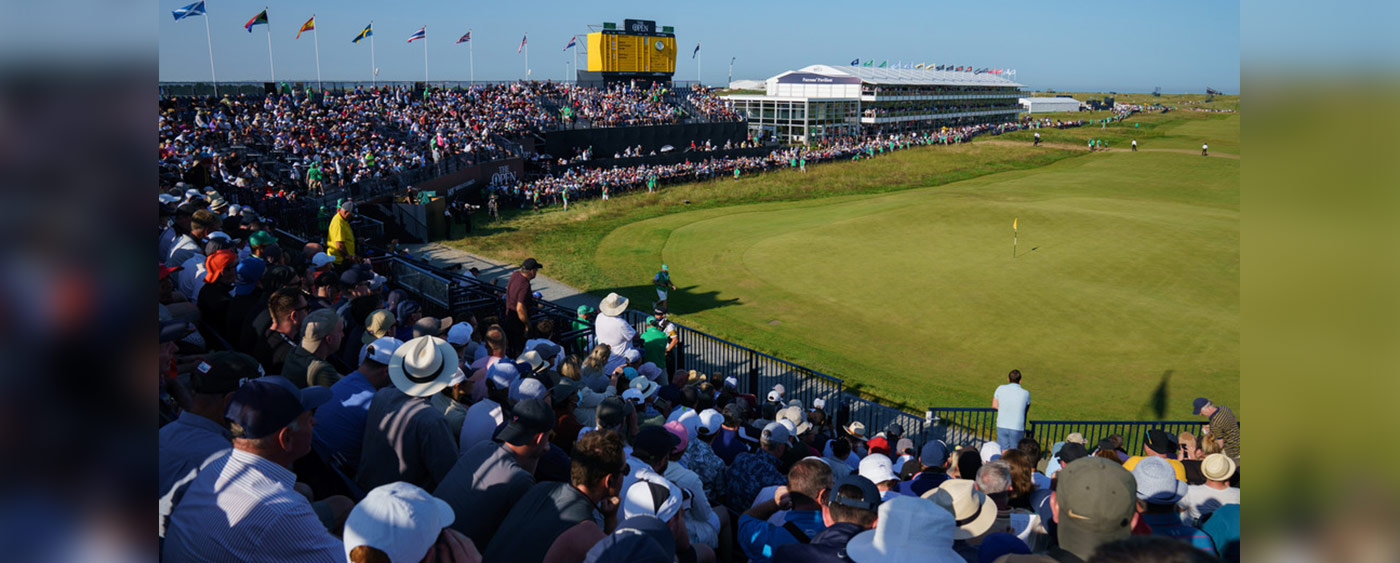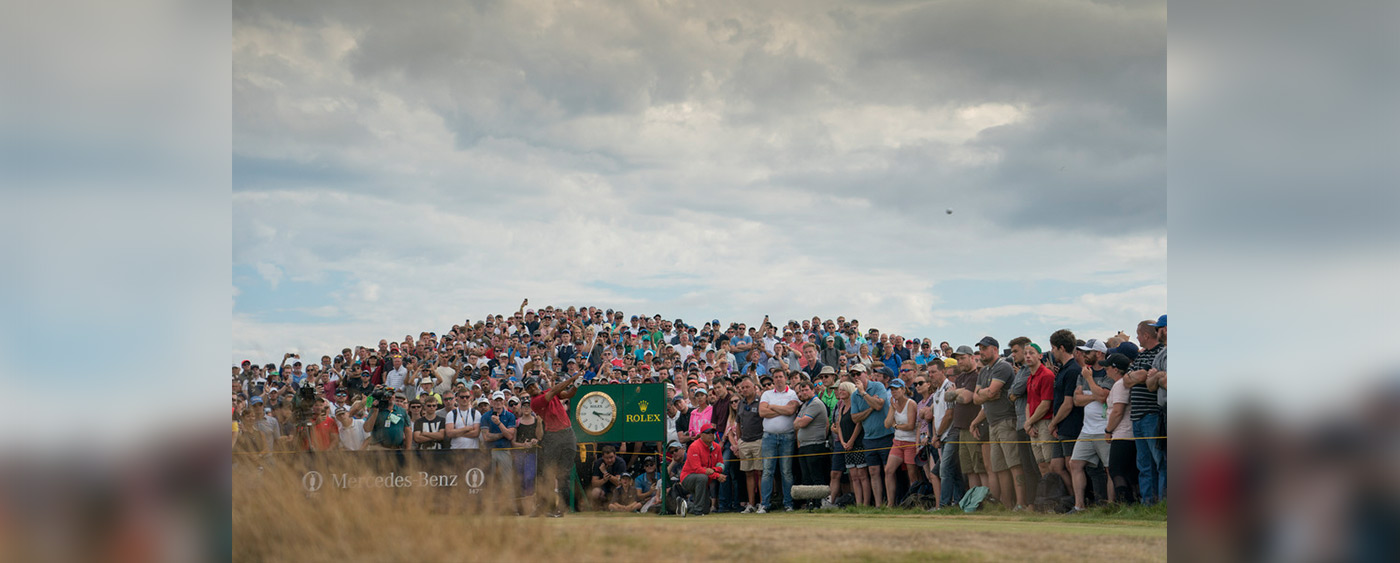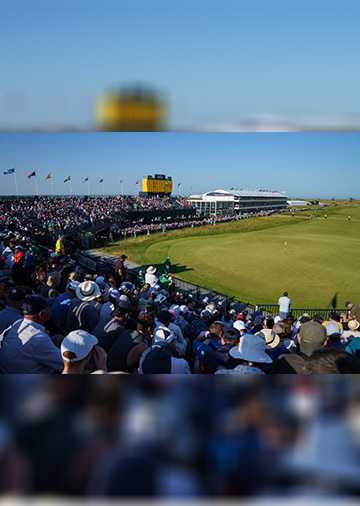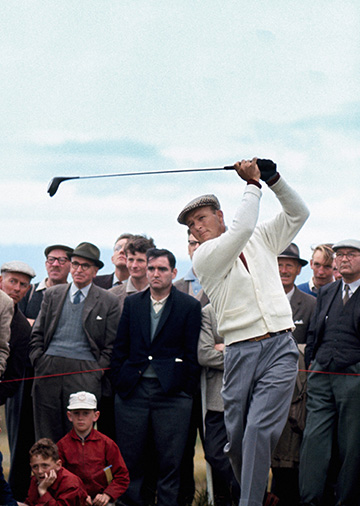
When The Open is played at St Andrews it becomes a significant occasion; indelible in the memories of those involved, be they organizers, players, spectators or patrons. The 150th edition of The Open in July was momentous. We take a look at the history of this jewel in the crown of golf opens, and its link with one of the most legendary watchmakers of all time, Rolex.
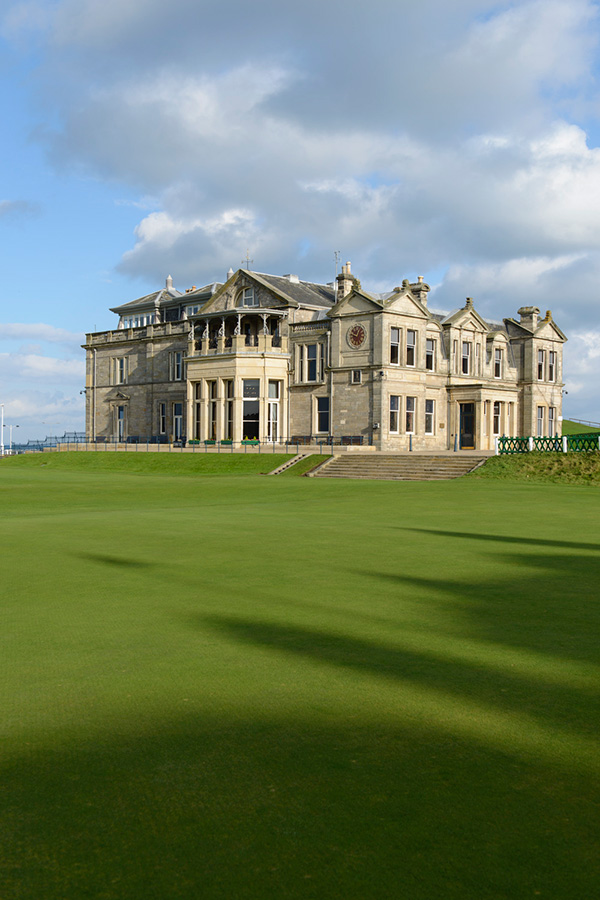 VIEW OF THE ROYAL & ANCIENT GOLF CLUB OF ST. ANDREWS
VIEW OF THE ROYAL & ANCIENT GOLF CLUB OF ST. ANDREWS
The Open, the oldest of golf’s four Majors, was played for the 150th time this year, and for such an historic occasion only one setting sufficed; St Andrews – the unequivocal ‘Home of Golf’ – and its venerable Old Course, which is among the earliest golf courses known to humans. And it was young Aussie Cameron Smith who walked away with the famous ‘claret jug’ trophy, as he shot 64 to claim the Open.
Just to look back… There is just something different in the North Sea air whenever The Open is played at St Andrews. The spirits of champions past pervade the Old Course, the beaches and the cobbled streets. The sense of occasion is peerless in golf and so it is unsurprising that many of golf’s greatest champions value victory in The Open at St Andrews above all others.
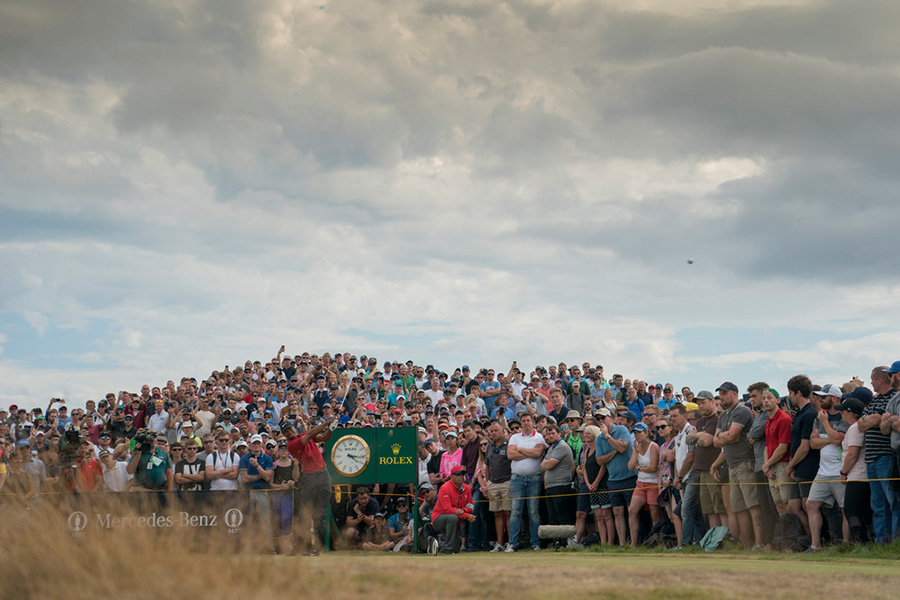 ROLEX TESTIMONEE TIGER WOODS PLAYING A SHOT AT CARNOUSTIE, HOST COURSE OF THE 147TH OPEN IN 2018
ROLEX TESTIMONEE TIGER WOODS PLAYING A SHOT AT CARNOUSTIE, HOST COURSE OF THE 147TH OPEN IN 2018
“It may be years before I fully appreciate it,” said Tiger Woods – a Testimonee for Rolex – after winning The Open on the Old Course in 2000, “But I am inclined to believe that winning The Open at the Home of Golf is the ultimate achievement in the sport.” The greatest player of his generation, Woods won The Open at St Andrews again in 2005 to the surprise of absolutely no-one at all.
All golf courses need to be designed by someone – a course architect – but not the Old Course, which evolved slowly, over hundreds of years. Golf was certainly played on the Old Course in the 16th century and early forms of the game are likely to have started there even before then. As golf itself grew as a sport, the Old Course was shaped by wind and rain and the will of Mother Nature more than by man.
That will of Mother Nature cannot be contained on the Old Course and nor should it be. The greatest defenses of this golf course against low scoring are the winds that are virtually ever-present. They might come from any direction and change at any moment, testing golfers and pushing wayward shots towards an abundance of gorse bushes and pot bunkers.
When more golf courses were laid out along the British coastline in the 19th century, the Old Course became the paragon of the sport. All of the other, younger, magnificent links golf courses that have also staged The Open were created in deference to the Old Course.
The Old Course occupies public land at the northern reaches of the ancient town of St Andrews and it is a golf course that belongs to the people. Indeed, it was only in the early 20th century that golfers were required to pay a fee to play on this hallowed turf.
It was in 1974 that The St Andrews Links Trust was established, a charitable organization that is responsible for the management and maintenance of the Links courses at St Andrews, Eden and Castle Course clubhouses, the Golf Practice Centre and Golf Academy.
St Andrews the town owns an incredibly long and rich history for a place of quite limited proportions. At its eastern reaches St Andrews is defined by the ruins of a medieval castle and cathedral, while the renowned St Andrews University dates back to 1413. Among universities within the English-speaking world, only Oxford and Cambridge pre-date St Andrews.
In the broad array of international sports, there is no field, track or court that can match the intrinsic role the Old Course has played in the rise of a sport, providing the stage on which almost every single notable name has competed. The spirits of legends past and present ride the winds over the Old Course, they gather around the first tee and flutter the pin flag on the 18th green. Nowhere is modern sport so intertwined with ancient history; Old Tom Morris, the grandfather of professional golf, learned his trade on the Old Course and maintained the course for decades. The indomitable American amateur Bobby Jones won The Open on the Old Course in 1926, while Jack Nicklaus – the “Golden Bear” and a long-standing Rolex Testimonee – was the first golfer of the modern era to lift the Claret Jug at St Andrews twice, in 1970 and 1978. Said Nicklaus in 1970: “If a golfer is to be remembered, he must win the title at St Andrews. At last it is my greatest dream come true.”
Between July 14-17, St Andrews and the Old Course hosted The Open for the 30th time and Rolex provided the on-course clocks, as it had done at The Open every year since 1981. The famous clocks represent one of golf’s longest-standing and most fulfilling sports partnerships.
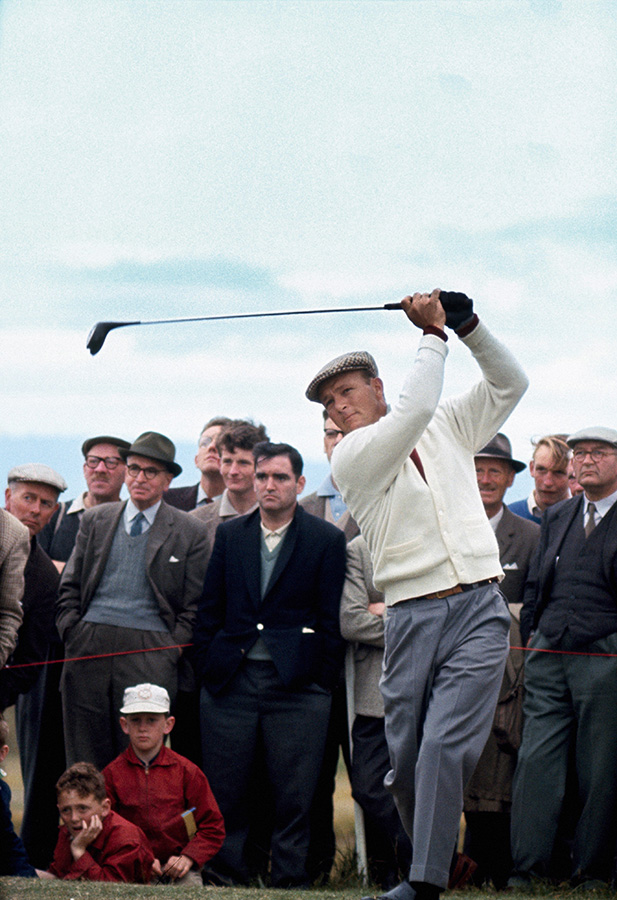 ROLEX TESTIMONEE ARNOLD PALMER PLAYING A SHOT AT THE OPEN IN 1962
ROLEX TESTIMONEE ARNOLD PALMER PLAYING A SHOT AT THE OPEN IN 1962
Rolex has long been integral in the support and evolution of golf at all levels, ever since it established its inaugural partnership in the sport in 1967, when American legend Arnold Palmer became the first Testimonee for Rolex in golf. Palmer represented the pre-eminent Swiss company with his inimitable charm and energy for the rest of his life.
Palmer was part of golf’s celebrated ‘Big Three’ with Nicklaus and South Africa’s Gary Player, and both Nicklaus and Player soon followed Palmer to become Rolex Testimonees. This was a formative era of international sports sponsorship and along with the Big Three, Rolex was at the vanguard.
The Big Three were the bedrock of Rolex support for golf, which has steadily built upwards ever since. In 1981 Rolex took golf sponsorship to a new level when it became Official Timekeeper of The Open and a flourishing partnership with The R&A – organizers of The Open and governors of the game around much of the world – was established.
The Royal & Ancient Golf Club of St Andrews was founded as a small society of golfers in 1754, without a golf course of their own, let alone a clubhouse. The Royal & Ancient Golf Club eventually opened its home – behind the first tee of the Old Course – in 1854, and in 1871 the club took on a share of responsibility for running The Open. The Royal & Ancient Golf Club would eventually take sole charge of The Open, oversee the Rules of Golf (in collaboration with the USGA in the United States) and work to develop the game around the world. Then in 2004 the club established a separate governing body – “The R&A” – to operate independently of the members’ club – which remains the “Royal & Ancient Golf Club of St Andrews” - although they both remain housed behind golf’s pre-eminent first tee.
Rolex and The R&A share values, ambitions and a vision for golf’s continuing evolution. These two organizations are underpinned by tradition and a long-standing insistence on excellence, while they are always looking forward, determined to innovate and to improve. This binding synergy has seen Rolex support The R&A in its endeavours with the World Amateur Golf Ranking, the translation of the Rules of Golf into more than 35 languages, the establishment of a new generation of elite amateur tournaments such as the Asia-Pacific Amateur Championship, and since 2012 Rolex has been presenting patron of The Senior Open.
“For more than 40 years, Rolex has played an integral role in the rich history of The Open,” Says Ian Pattinson, Chairman of The R&A Board and Chairman of The Royal & Ancient Golf Club of St Andrews. “Without question, the R&A’s partnership with Rolex, which gets stronger each year, has actively supported the growth of the modern game and encouraged its development around the world. We hope and believe that this will continue for years to come. We have really enjoyed our relationship with Rolex and I always feel their traditional values are very much aligned with those of the R&A and ultimately, with the sport of golf. Rolex is not just a company that makes fantastic watches, it’s a global brand that is known as a standard of quality, precision and excellence.”
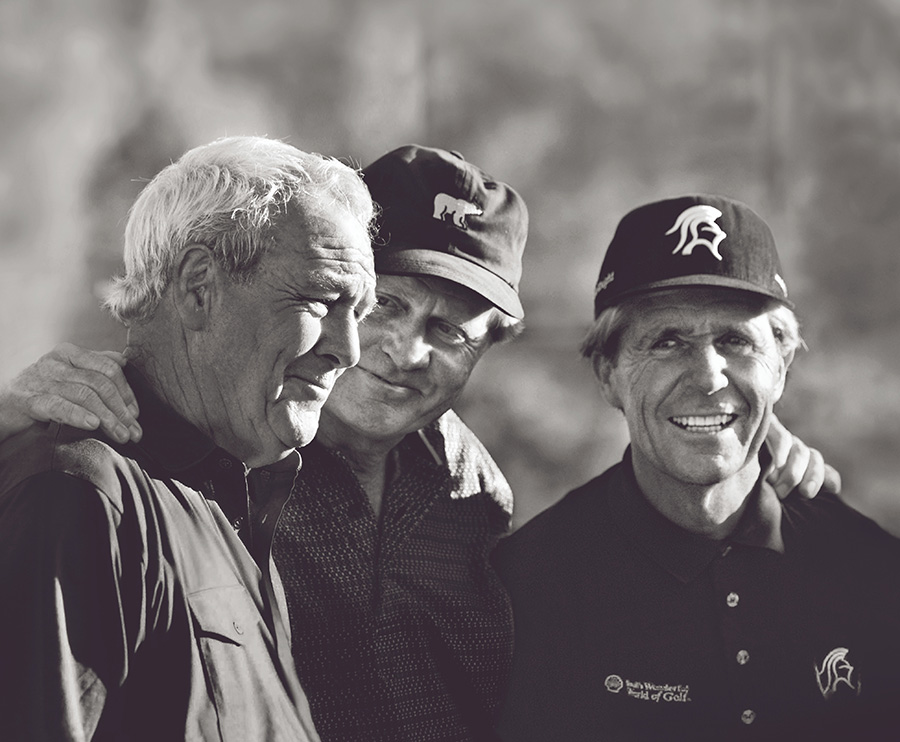 TESTIMONEES ARNOLD PALMER, JACK NICKLAUS AND GARY PLAYER
TESTIMONEES ARNOLD PALMER, JACK NICKLAUS AND GARY PLAYER
Rolex has established partnerships with all four of golf’s Major tournaments; the Masters, PGA Championship and U.S. Open as well as The Open, and its sphere of embellishment extends through the world’s foremost golf tours and championship for men and women, including the Major championships for women and seniors.
Palmer became one of televised sport’s first all-action idols in an era when live sports broadcasting began to gain momentum. In 1960 Palmer was in his all-conquering prime. He was the best golfer in America but he wanted to be tested against the best in the world. Palmer won the 1960 Masters and the U.S. Open and with The Open that summer slated for St Andrews, Palmer identified the Claret Jug as his next target.
The establishment of the Masters, PGA Championship, U.S. Open and The Open as golf’s four Majors had not yet taken hold, but it was Palmer’s trip to the “Auld Grey Toon” in 1960 that raised the profile of The Open and positioned it alongside the three pre-eminent tournaments of American golf in a four-cornered “Grand Slam”.
Ultimately, Palmer did not win on his debut in The Open. He finished runner-up by a shot but a new precedent was set. Palmer returned to win The Open in 1961 at Royal Birkdale and again in 1962 at Royal Troon, and where ‘The King’ walked, the other leading American players followed, making The Open the most international of the four Majors.
It is now 60 years since Palmer lifted the Claret Jug for the second time at Troon, on Scotland’s west coast. Palmer was at his irresistible best that week, winning by a clear six shots with a final score of 276, which matched the record low score in majors golf at the time. Palmer’s popularity that week was such that The R&A subsequently introduced stricter crowd control measures. The roping-off of fairways and the fencing of course boundaries began a year later, after thousands of fans at Troon evaded the turnstiles and stormed the golf course from the beach to catch a glimpse of their American hero.
Palmer set the tone for Rolex Testimonees in golf and many of them – like Nicklaus and Woods – have followed his lead to win The Open.
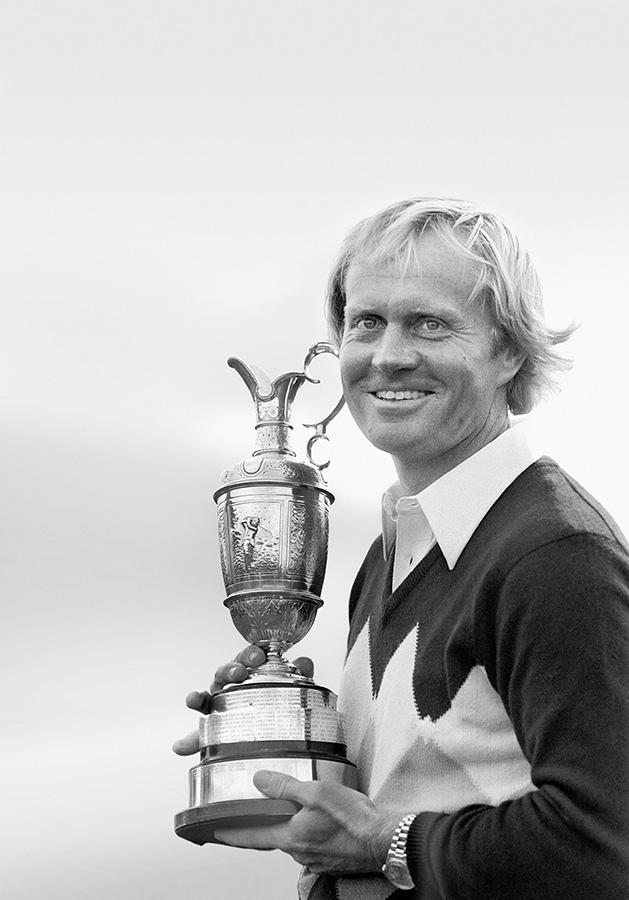 ROLEX TESTIMONEE JACK NICKLAUS LIFTS THE CLARET JUG TO CELEBRATE WINNING THE OPEN IN 1978
ROLEX TESTIMONEE JACK NICKLAUS LIFTS THE CLARET JUG TO CELEBRATE WINNING THE OPEN IN 1978
Nicklaus recorded his last professional Open Championship round in 2005 where, in the company of fellow Rolex Testimonee, Tom Watson, he birdied the last hole in emotional scenes at the Home of Golf. To celebrate his achievements within the world of Golf, the local St. Andrews Community Council presented the highest honour the ‘Home of Golf’ can bestow during the civic ceremony in St Andrews during the week of the 150th Open Championship. Remarkably, Woods plotted his way around the Old Course with such unerring precision that over 72 holes, not once did he play his ball into a bunker. Woods won by an astonishing eight shots that year and his final score of 269, 19 under par, remains the lowest ever score in The Open at St Andrews.
Before Woods, Rolex Testimonee Tom Watson enjoyed an extraordinary affinity with golf’s oldest major, winning the championship five times between 1975 and 1983. It is an achievement made all the more impressive by the American winning at five different venues; Carnoustie (1975), Turnberry (1977), Muirfield (1980), Royal Troon (1982) and Royal Birkdale (1983). Scottish golf fans took in the American Watson as one of their own and he used the occasion of the Open in 2015 at St Andrews to tee up in his favourite championship for the last time. Gary Player also enjoyed a strong affinity with The Open which led him to win the first of three Claret Jugs in 1959 at Muirfield with the other two coming at Carnoustie (1968) and Royal Lytham (1974). Player is also recognised as the only player in the history of golf to win The Open spanning three different decades.
The special history and tradition of The Open is epitomized by the Claret Jug, or the Golf Champion Trophy (to use its official name). Crafted in Edinburgh in 1873, the original Claret Jug was retired to The R&A Clubhouse – behind the first tee of the Old Course – in 1927, with ceremonial duties taken up by a replica that is exact in every detail apart from its hallmark. The replica is so exact in fact, that in 1982 an official got the two trophies mixed up and Tom Watson was mistakenly presented with the original Claret Jug when he won.
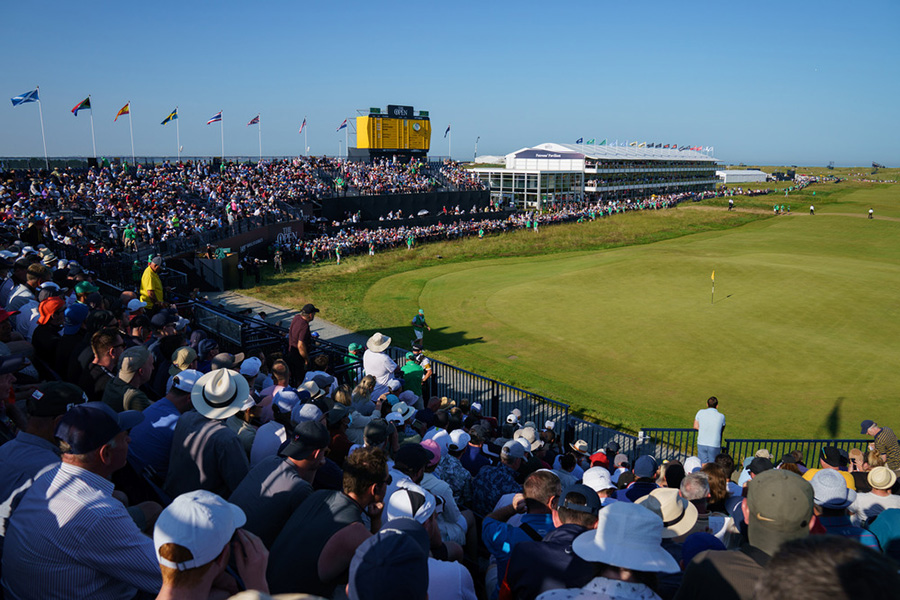 A VIEW OF THE 18TH HOLE AT CARNOUSTIE GOLF LINKS AT THE 147TH OPEN IN 2018
A VIEW OF THE 18TH HOLE AT CARNOUSTIE GOLF LINKS AT THE 147TH OPEN IN 2018
Like the Claret Jug, each of the venues that host The Open are icons of golf in their own right. They are among the world’s oldest courses and they all have their own colourful histories and traditions. While they are each magnificent golf clubs, dotted around the coastlines of the United Kingdom, they are brought together by each contributing significantly to the epic tale of The Open. The Old Course, St Andrews has staged The Open more than any other, yet the history of The Open is made all the richer by its migratory cycle.
Rolex Testimonee Jordan Spieth won The Open at Royal Birkdale in 2017 – leaving the young Texan with just the PGA Championship to go if he is to follow Testimonees Nicklaus, Player and Woods in completing the Career Grand Slam. Spieth was just 23 when he lifted the Claret Jug, and from golf’s great pantheon only Nicklaus had accumulated three Major titles faster. Back in 2015, the last time The Open was played at St Andrews, Spieth was in contention for the Claret Jug until late in the final, when he ultimately fell shy of a play-off by just one shot.
“I will never forget The Open in 2015,” says Spieth. “We battled through every kind of weather you could imagine. It was a challenge, but incredibly exciting and I knew I was part of a very special championship. The Open at St Andrews takes the game to a different level, and I can’t wait to return to the Home of Golf this summer.”
Then in 2018, fellow Testimonee Francesco Molinari became Italy’s first ever major champion at Carnoustie. The humble Molinari did not drop a single shot over the final two rounds to win the Claret Jug by two shots from a chasing pack that included Woods and Spieth. Indeed, Molinari was paired with Woods in the final round and a faultless 69, two under par, was sealed with a birdie at Carnoustie’s treacherous 18th.
Nine Rolex Testimonees have won The Open, combining for a total of 20 victories over the past six decades. Rolex has cultivated indelible ties with The Open, it’s golfers and The R&A and as happens every year, for the 150th Open, Rolex wasthere by its side, every second of the way.
FOLLOW US ON INSTAGRAM

Lifestyle Insider is a kind of junction point, connecting people with diverse interests that touch on the more luxurious aspects of lifestyle – fashion, design, travel, food and spirits, art, watches and jewellery, cars, yachts, and aviation, and technology. People today don’t fit into boxes and categories. In our individual ways, we are interested in diverse themes, products, and the challenges that face our world today. You will judge how well this effort of mine caters to your passions and proclivities.
Lifestyle Insider is a showcase of all that is beautiful and luxe. Behind every creation, is a designer, chef, entrepreneur, or a design maison. I have delved into my own appreciation for objetsde luxe that I have admired over the years – be it a love of fashion from the world’s top Parisian and Italian fashion maisons and their ’90s muses, or the care that goes into sari and Indian textile collections in my own family. Growing up on four continents, as the daughter of a former Indian Ambassador, I’ve seen a remarkable array of historic places and met a myriad people. My aim is to bring my world view into this website, a curation of what I find particularly stunning, unique, and newsworthy.
It’s an exciting time for brands all over the world. With change comes opportunity. With the global ‘reset’ and uncertainty on many fronts, there is a chance to write a new script. Let’s be those pioneers.
A bit about me:
A luxury and fashion journalist with 25 years of experience in publishing and magazine journalism, I have edited some of India’s top fashion and luxury magazines. I got my BA in Comparative Literature from UC Berkeley, and went on to receive my Master’s in English and French from the University of Strasbourg, France. I have also studied German and Film. I live in Gurugram, India, and look forward to once again exploring our world with a new-found freedom.
Priya Kumari Rana
Founder and EditorContact Us
Mail us @ lifestyleinsiderindia@gmail.com
